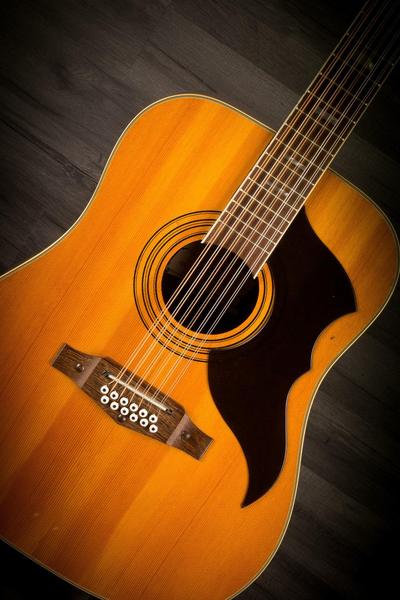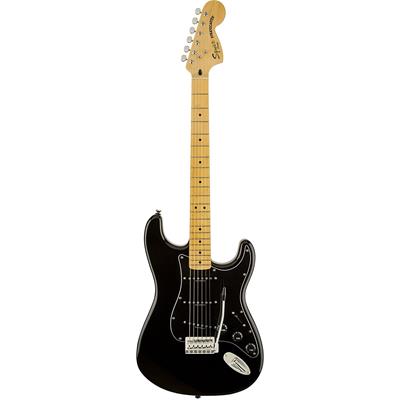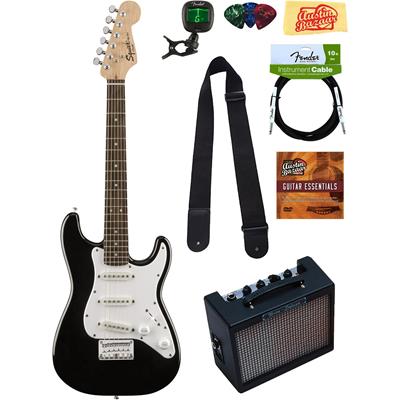The kings, the rulers, and the bosses of extended range – 12 string acoustic guitars – were definitely created by the gods themselves. There is something about their sound that cannot be substituted by digital processing and any other fancy technologies that we use these days. Yes, I know, they look scary at first but trust me, there is nothing to be afraid of. Of course, they have some drawbacks (more on that later), but there is nothing you should not sacrifice to the sound they can create. As you have already figured out, today we will be discussing the ethereal sound of 12-string acoustic guitars and what makes them different from our beloved 6-string guitars.

What are 12-string acoustic guitars?
You might be wondering what the hell is a 12 string acoustic guitar and how it is even possible. Well the short and straightforward answer to that question is that (drum roll) they have 12 strings – surprising, ha? I know that this does not exactly sound like an explanation, but that is basically the whole thing. They look the same as 6 string acoustic guitars, but their strings are laid out in pairs. In other words, each string has its own exact replica. The first two pairs are tuned in the same way and basically create the twin notes. Things are a bit different with the lower 4 pairs. Here, one string in each pair is tuned an octave apart from its sibling. Their standard tuning is quite distinctive – we have E3•E2-A3•A2-D4•D3-G4•G3-B3•B3-E4•E4. It is important to know that 12 string acoustic guitars are played the same way as 6-string ones: paired strings are treated as one and strummed accordingly.
Compared to other extended range guitars, 12 strings do not offer as much sonic possibilities. Since the strings are treated as one, there is no room for additional notes or defined details. And to be honest, this instrument is not about that at all.
Sound difference between 6 string and 12 string guitar

The easiest way to explain the sound of 12-string acoustic guitars is to juxtapose them with their classic siblings. Imagine adding a chorus effect to your 6-string sound – it would double each note and create a fuller tone. That is what 12-string acoustic guitars sound like. Since they have doubled strings, they create a thicker, richer, more dimensional output that has its own unique character. They are not meticulous when it comes to individual notes and do not have as much definition as their classic (less-string) variations. However, these guitars can take you to a different universe of sounds with just a little effort. 6 string acoustic guitars do not have any limits when it comes to diversifying your performance, imagine what happens with 12 strings. If you are adventurous and do not like walking the beaten track, you will definitely enjoy this unworldly instrument.
The pros and cons of 12 string acoustic guitars
Every coin has two sides and every instrument has certain advantages and disadvantages. In order to understand what you are facing in terms of 12 string acoustic guitars, I will list down their pros and cons.
Pros:
- They have different (in a good way) tone: as I have already mentioned, the sound of 12-string acoustic guitars can be distinguished from 6 strings easily. It is way thicker and creates the illusion of several instruments played at once.
- They offer extended sonic range (to a certain extent at least): I said above that they do not extend the sonic range as much, but this does not mean they do not succeed at this at all. Just the fact that you have 12 strings already means that you will have more chords and sounds to work with.
- They make playing 6 strings seem super easy: when you practice pressing the double strings with one finger and strumming or picking 12 strings at once, 6 strings will seem like a child’s play.
Cons:
- They are bigger in size: this is a minor issue, but 12 string guitars are bigger in size and might be a bit inconvenient at first. However, with some practice, you will easily get used to them.
- Changing the strings is pain in the neck: obviously, changing and adjusting 12-string guitars are harder and require more attention to detail.
- The neck has to be extremely sturdy to hold the tension, which means that poorly made models will not last that long.
Conclusion
All in all, 12 string acoustic guitars are that sparkle that can light up any performance. They offer completely different sounds and have a distinctive character. This allows them to occupy the top within the extended range guitars and change the way we perceive music. Just listen to the magic of 12 strings and you will know what I am talking about. Good luck!






